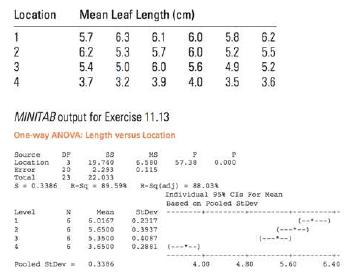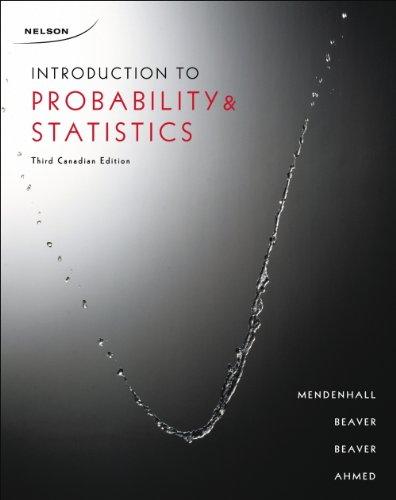11.13 Swampy Sites An ecological study was conducted to compare the rates of growth of vegetation at
Question:
11.13 Swampy Sites An ecological study was conducted to compare the rates of growth of vegetation at four swampy undeveloped sites and to determine the cause of any differences that might be observed. Part of the study involved measuring the leaf lengths of a particular plant species on a preselected date in May. Six plants were randomly selected at each of the four sites to be used in the comparison. The data in the table are the mean leaf length per plant (in centimeters) for a random sample of 10 leaves per plant. The MINITAB analysis of variance computer printout for these data is also provided.

a. You will recall that the test and estimation procedures for an analysis of variance require that the observa- tions be selected from normally distributed (at least, roughly so) populations. Why might you feel reason- ably confident that your data satisfy this assumption?
b. Do the data provide sufficient evidence to indicate a difference in mean leaf length among the four loca- tions? What is the p-value for the test?
c. Suppose, prior to seeing the data, you decided to compare the mean leaf lengths of locations 1 and 4. Test the null hypothesis = against the alterna- tive 4-
d. Refer to part
c. Construct a 99% confidence interval for (-4).
e. Rather than use an analysis of variance F test, it would seem simpler to examine one's data, select the two locations that have the smallest and largest sample mean lengths, and then compare these two means using a Student's t test. If there is evidence to indicate a difference in these means, there is clearly evidence of a difference among the four. (If you were to use this logic, there would be no need for the analysis of variance F test.) Explain why this procedure is invalid.
Step by Step Answer:

Introduction To Probability And Statistics
ISBN: 9780176509804
3rd Edition
Authors: William Mendenhall






